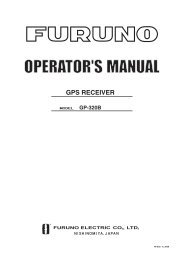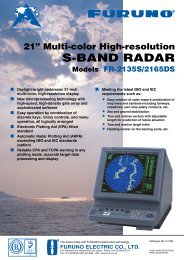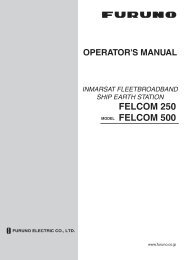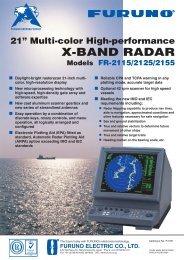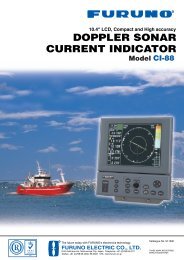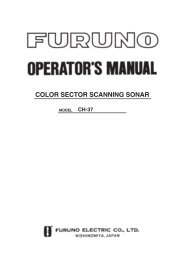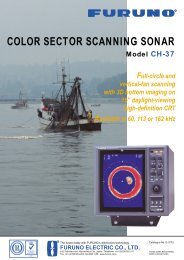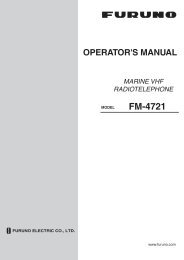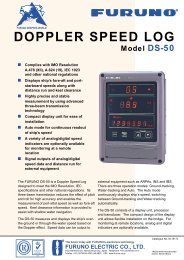COLOR VIDEO SOUNDER
COLOR VIDEO SOUNDER
COLOR VIDEO SOUNDER
- No tags were found...
Create successful ePaper yourself
Turn your PDF publications into a flip-book with our unique Google optimized e-Paper software.
2.4 Adjusting GainThe [GAIN] control adjusts the sensitivity of the receiver. Adjust it so that a slight amount of noiseremains on the screen. Generally, use a higher gain setting for greater depths and a lowersetting for shallower waters.Note: The [GAIN] control is inoperative when the automatic mode is active.Gain too high Gain proper Gain too low2.5 Automatic OperationAutomatic operation is useful when you are preoccupied with other tasks and do not have time toadjust the display.2.5.1 How it worksThe automatic function automatically selects the proper gain and range scale according to depth.It works as follows:• The range changes automatically to locate the bottom on the lower half of the screen. Itjumps to one step shallower range when bottom echoes reach a halfway point of the full scalefrom top and to one step deeper range when they come to the lower edge of the scale.• The gain is automatically adjusted to display the bottom echo in reddish-brown (default colorarrangement).• Clutter level (on the main menu), which suppresses low level noise, is automatically adjusted.2.5.2 Enabling automatic operationTwo types of automatic modes are available: AUTO 1, for fishing, and AUTO 2, for cruising.Since cruising uses a higher clutter rejection setting than fishing, it is not recommended fordetection of fish because weak fish echoes may be deleted by clutter rejection. Note that the[SHIFT] keys ([+], [-]), [RANGE] switch and [GAIN] control are inoperative in the auto mode.Press the [AUTO] key. Each press of the key turns the auto function on or off in the sequenceshown below.AUTO-1 ON(FISH MODE)AUTO-2 ON(CRUISE MODE)AUTO OFF2-6




